As an international relations major, I spend the vast majority of my time reading about various countries and writing essays examining them inside and out. It’s kind of ironic, then, that I can’t find the free time to write one more – about a place I’ve personally done the research for no less. Call it extended reflection or procrastination, but either way this article is pretty behind schedule. Sorry readers (mostly Grant) for the delay, but I hope it will be worth the wait.
San Javier, Riverbed Rambling, Punta Chivato
I always liked mountain roads. Something about the way they zig and zag back and forth as they climb in elevation fascinates me. I guess it shows nature’s persisting victory over man, that try as we might, rock and sand will outlast pavement and concrete, tunnels will crumble, and mountains will remain immortal. Yet even with our insignificance, the desire to try to overcome the force that is nature never goes away. It’s the impossible mismatch that forces us on, making every switchback more uncomfortable and exhilarating than the last. Knowing nature will outlast, this victory is even more ephemeral, and the discomfort this gives makes it all the more exciting. We were pioneers carefully skirting the edge between humanity and nature. Literally. I mean, parts of the road weren’t even there…
With a stomach full of soggy oatmeal and watered-down coffee, we packed up the car and set out from our beachfront suite. Following Ernie’s advice, we decided to leave the coast and head inland to the misiòn San Javier. After consulting a group of accommodating construction workers, we were able to find the poorly marked road that was far more vivid on our map than in actuality. We knew in advance that it would take us roughly an hour to get to the mission from Loreto, so we took our time meandering through the mountains and just enjoying the view. It took some coaxing, but I managed to convince Grant to not take every side road down the cliffs under the condition that we would stop and explore on the way back. He reluctantly agreed, but would later admit that he might have been a bit over ambitious with some of route choices.
Once we ascended the mountain, the road settled into a plateau and a small river began to emerge before our eyes. The rocky riverbed we had been crossing over and the winding valley it had carved out was finally showing signs of life. We knew we were getting close. At this time of year the river was little more than a series of small pools slowly drying up from a combination of the sun and wandering cattle, but you could see its impact in the foliage spring up around us. The cactus and parched looking shrubs and trees were starting to become lush and green – a sight we honestly hadn’t seen much of outside of the towns we passed through
From the greenery a small town slowly emerged winding down into a small valley. Framed by the surrounding cliffs, the misiòn San Javier was placed at the center of the town around a small cobble stone road. The town, let alone the mission stuck out like a sore thumb in an otherwise barren land. The site was founded in 1699 by Jesuit missionaries, the actual mission not being constructed for some fifty years later. It is a breathtaking architectural triumph to build something so beautiful in the middle of nowhere. It helps when you “liberate” an indigenous people of their heathen ways to help them serve your god. As Jesuit control of the region spread, the native Cochimi people rapidly declined. There’s something here about the irony of creating so much death while preaching life, but it’s two in the morning and I’ve had enough meditation for one day.
Leaving the mission, we retraced our footsteps and headed back to Loreto. Honoring my promise to Grant, we took several detours we had skipped earlier, and the results, well, varied. The first detour saw us getting stuck down a rather steep and sandy hill which we thought was a road. It wasn’t. Some quick thinking and far from standard recovery procedures got us out just fine, and we were on our way, albeit slightly rattled.
The next detour proved far more fruitful. The trickinling river we had been winding along next to previously was finally dried up, and its bed became a highly interesting (and recommended) makeshift highway. A quick deflate of the tires and we were on our way. Used by adventurers and construction workers alike taking advantage of the dry season, the riverbed was a mix of tight curves and open expanses, and a far more enjoyable hike than our earlier experiment. Following a wayward dump truck we hopped out of the bed on an unassuming ramp hidden behind a few scraggly tress. A quick jaunt through a junkyard and some enterprising goats and we were back on Route 1 headed to Punta Chivato.
“Just take the first paved road you see outside of Mulegé.” Our de facto Baja guide Ernie told us of a sweet campsite on the coast along our planned route, and gave explicit directions to get there. Punta Chivato did not appear on any of our maps, nor did any roads outside of Mulegé, but if we had learned anything from our short time on the Baja, it’s that word of mouth trumps a map nine times out of ten. And thus far, Ernie was batting one thousand.
“Paved road” was a bit of a misnomer, but after a beautiful drive up the coast past the Bahia de Concepción and through Mulegé, we located the turn in question. It was paved, sure, but only for a bout forty feet. The turn in question was coupled with several small houses and buildings, but the asphalt quickly turned into stone, and then into sand as we followed more poor signage down the path. After twenty minutes or so we emerged over a hill and saw why Ernie insisted we stop. A clear, sprawling beach hidden by the dunes stretched out before us. The sparse population of unfinished housing developments did little to corrupt the beauty of the beach. We drove the car a little ways down and set up camp on the sand. As the sun set between the mountains behind us, we finished our Pacificos and climbed into our trunk-top nest.
Part 4 (the end!) is coming soon. Keep an eye out.

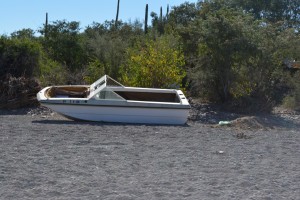

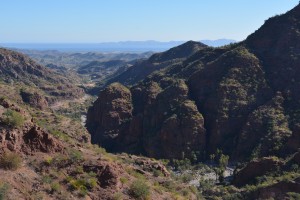
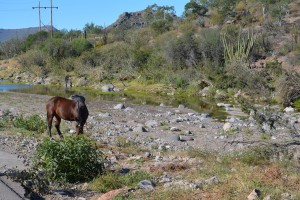
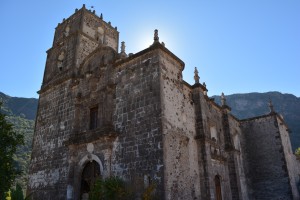
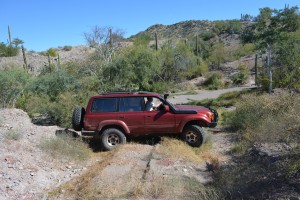
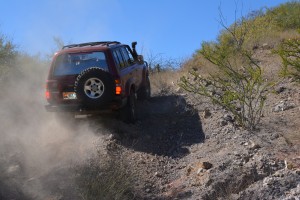
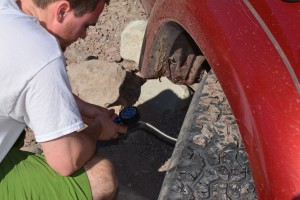
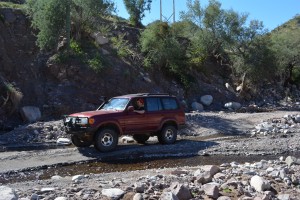
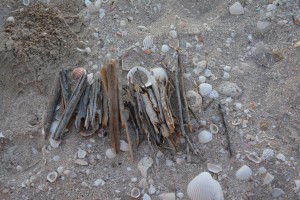
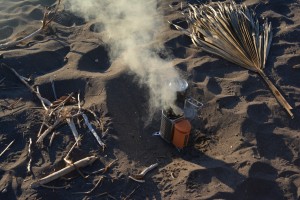
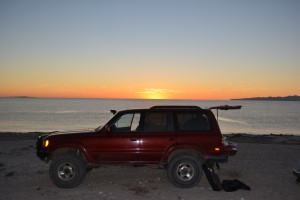
Worth the wait.